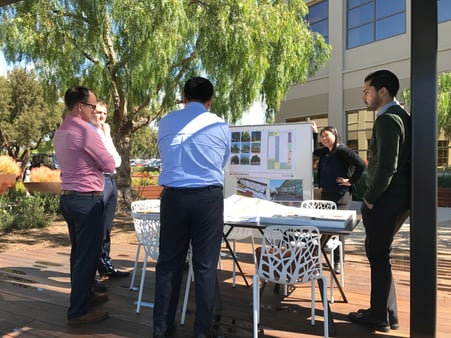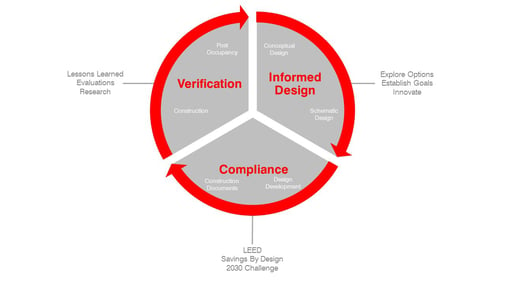Introducing LPAred: Research. Education. Design.
Fri, Mar 17, 2017 Kate Mraw Research Based Design Focus, Kate Mraw, Informed Design, Integrated Design, LPAred
![]()
![]() At LPA, we believe that research is integral to innovation. LPAred—which stands for research, education and design—is our research initiative that assists our project teams and clients in making informed design decisions.
At LPA, we believe that research is integral to innovation. LPAred—which stands for research, education and design—is our research initiative that assists our project teams and clients in making informed design decisions.
 Through LPAred, we are investing in research to understand how our work impacts the end users, communities and the environment. Our team of thought leaders will share literature reviews, whitepapers, blog posts and webinars to advance the conversation of research-based design. It is also a resource for planning and design initiatives, creating more sustainable, human-centered solutions and effectively engaging project stakeholders.
Through LPAred, we are investing in research to understand how our work impacts the end users, communities and the environment. Our team of thought leaders will share literature reviews, whitepapers, blog posts and webinars to advance the conversation of research-based design. It is also a resource for planning and design initiatives, creating more sustainable, human-centered solutions and effectively engaging project stakeholders.
Innovations in building technologies and evaluating our building performance dramatically influences how we design the built environment. When we balance energy analysis, design simulations and virtualizations with focused research and knowledge sharing, we can deliver improved design solutions; places and spaces that are more energy-efficient, more aligned to the workplace culture or educational goals of an organization, and a healthier building that elevates user experience.
Post Occupancy Evaluations
LPA has formalized our Post Occupancy Evaluation (POE) process to better understand our built work relative to energy and water utilization, health and wellness, and user experience. Through this verification phase and lessons learned, we are creating a feedback loop to improve our work and provide increased value for our clients on current and future projects.
 Energy + Water
Energy + Water
As part of our sustainable design practice, we set energy and water goals at the beginning of every project. With LPAred, we collect historical energy and water use data to understand the operating performance of our buildings.
Health + Wellness
LPA is an industry partner with the Center for the Built Environment (CBE). We work with the CBE to evaluate the occupant’s responses about satisfaction with their indoor and outdoor environments. The CBE survey focuses on indoor environmental quality, including thermal comfort, air quality, acoustics, lighting, spatial layout and furnishings, as well as building features, wayfinding and site.
User Experience
In addition to the work with CBE, our verification phase addresses the user experience. This evaluation is completed through field visits, focused interviews and observations to help us understand how effective various design strategies are and their influence on the users.
LPAred will develop best practices for influencing our integrated design process, as we are committed to turning research into application. With this focus on energy and water, health and wellness, and user experience, our studies will inspire the sustainable spaces and places we create.
The function and purpose of LPAred is to engage research and evidence-based design to forge a stronger alignment between design decisions and user experiences. Through this valuable feedback process, we can educate our firm, our clients and our industry through lifelong learning. We invite you to learn more about LPAred by contacting one of our team members.
Kate Mraw is an Associate at LPA Inc. Her design for K-12 schools encourages collaboration, experimentation, and innovation. Mraw is a LEED Accredited Professional and received her Bachelor of Science in Interior Design from the University of Texas, Austin School of Architecture. A version of this article was included in LPA Studies: Innovative STEAM Schools.
